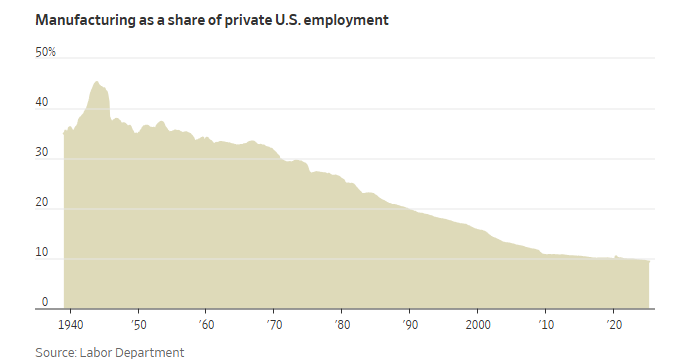Some perspective on the post WWII trend of manufacturing employment as a % of total US private sector employment was a great visual in the WSJ yesterday. Notice how the decline started well before NAFTA came into effect in 1994 and China entered the WTO in 2001. Also, below that chart is one of the exports of goods from the US since 1987 that I saw data on. Outside of recession, it's gone straight up. Important information on this whole debate as manufacturing productivity has surged for decades.
I'm most worried about small businesses that procure products from China and don't have the quick agility to line up factories in other countries. Many are not going to make it. To put a number around here, in yesterday's WSJ, "Small and midsize companies account for $868 billion, or roughly one-third, of annual US imports, according to the Census Bureau." The article also cited a particular business that sells seasonal fireworks that they get from China. They are not opening this year and "The whole decision was tariff-based."
Another was Nils Skiwear, a California based apparel company. The president said "I don't think they understand that a lot of little businesses are going to go away." The article said "His business isn't likely to have the cash needed to cover tariffs on orders placed in early February that are slated to arrive in mid-August for ski season."
Understand the major working capital challenges here. Importers have to pay the tariff upon shipment, now 145% more expensive from China, while it takes time to sell the goods. https://www.wsj.com/economy/trade/smallest-businesses-are-biggest-losers-in-global-tariff-war-f4df62d5
Keep reading with a 7-day free trial
Subscribe to The Boock Report to keep reading this post and get 7 days of free access to the full post archives.





